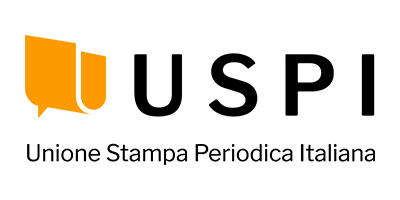Hewlett Packard Enterprise Delivers Second Exascale Supercomputer, Aurora, to U.S. Department of Energy’s Argonne National Laboratory
Today at ISC High Performance 2024, Hewlett Packard Enterprise (NYSE: HPE) announced that it has delivered the world’s second exascale supercomputer, Aurora, in collaboration with Intel for the Unit...
One of two HPE Cray EX supercomputers to exceed an exaflop, Aurora is the second-fastest system in the world
HAMBURG, Germany: Today at ISC High Performance 2024, Hewlett Packard Enterprise (NYSE: HPE) announced that it has delivered the world’s second exascale supercomputer, Aurora, in collaboration with Intel for the United States Department of Energy’s Argonne National Laboratory. Aurora has reached 1.012 exaflops on 87% of the system, making it the world’s second-fastest supercomputer as verified by the TOP500 list of the most powerful supercomputers. HPE is the world leader in supercomputing1 and Aurora is not only the company’s second exascale system, but also the largest AI-capable system in the world, taking the top spot on the HPL Mixed Precision (MxP) Benchmark2, achieving 10.6 exaflops on 89% of the system.
“We are honored to celebrate another significant milestone in exascale with Aurora, which delivers massive compute capabilities to make breakthrough scientific discoveries and help solve the world’s toughest problems,” said Trish Damkroger, senior vice president and general manager, HPC & AI Infrastructure Solutions at HPE. “We are proud of the strong partnership with the U.S. Department of Energy, Argonne National Laboratory, and Intel to realize a system of this scale and magnitude that was made possible through our joint innovative engineering, multiple teams, and most importantly, shared value of delivering state-of-the-art technology to fuel science and benefit humankind.”
An exascale computing system can process one quintillion operations per second. Computational power at this scale makes it possible to address some of humanity’s most complex problems. Aurora is built with the HPE Cray EX supercomputer, which is purpose-built to support the magnitude and scale of exascale. The system is also the largest deployment of open, Ethernet-based supercomputing interconnect – HPE Slingshot – on a single system. This fabric connects Aurora’s 75,000 compute node endpoints and 2,400 storage and service network endpoints along with 5,600 switches to boost performance by enabling high-speed networking across Aurora’s 10,624 compute blades, 21,248 Intel® Xeon® CPU Max Series processors and 63,744 Intel® Data Center GPU Max units, making it one of the world’s largest GPU clusters.
Planned as an AI-capable system from inception, researchers will be able to use generative AI models on Aurora to accelerate scientific discovery. Early AI-driven research that scientists have run on Aurora include brain mapping to better understand the human brain’s 80 billion neurons, high energy particle physics enhanced by deep learning, and machine-learning accelerated drug design and discovery, among others.
“Aurora is a first-of-its-kind supercomputer and we expect it to be a gamechanger for researchers,” said Rick Stevens, associate laboratory director and distinguished fellow at Argonne National Laboratory. “Reaching this milestone with a second exascale system in the U.S. is an incredibly significant achievement that will advance open science initiatives globally.”
The Aurora exascale supercomputer is the result of a strong private-public partnership between HPE, Intel, the U.S. Department of Energy, and Argonne National Laboratory, which requires co-investment and co-development to create the breakthrough engineering that is necessary to advancing science. Partnerships between the private and public sectors are key to achieving scientific progress as demonstrated by work done through the Aurora Early Science Program. As part of the process of optimizing and stress-testing the system, researchers have already successfully run a diverse range of programming models, languages and applications on the system.
“The Aurora supercomputer was designed to support the research and science communities within the HPC and AI space,” said Ogi Brkic, Intel vice president and general manager, Data Center AI Solutions. “Our ongoing collaboration with Argonne National Laboratory and HPE has resulted in promising early science success stories. And we’re excited to see what’s to come as we continue to optimize system performance to accelerate the science and march toward what is next.”
Aurora has achieved exascale on a partial run of the system, tapping 9,234 of the total nodes. Aurora is an open science system housed at the Argonne Leadership Computing Facility (ALCF), a part of the U.S. Department of Energy’s Office of Science user facility.
VIDEO: Message from HPE’s Neil MacDonald on the Aurora exascale supercomputer
About Hewlett Packard Enterprise
Hewlett Packard Enterprise (NYSE: HPE) is the global edge-to-cloud company that helps organizations accelerate outcomes by unlocking value from all of their data, everywhere. Built on decades of reimagining the future and innovating to advance the way people live and work, HPE delivers unique, open, and intelligent technology solutions as a service. With offerings spanning Cloud Services, Compute, High Performance Computing & AI, Intelligent Edge, Software, and Storage, HPE provides a consistent experience across all clouds and edges, helping customers develop new business models, engage in new ways, and increase operational performance. For more information, visit: www.hpe.com
1 Hyperion Q4 2023 HPC Market Data Report reflecting CY2023, Supercomputer Segment (May 29, 2024), Hyperion Research
2 The HPL-MxP benchmark seeks to highlight the emerging convergence of HPC and AI workloads.
Fonte: Business Wire
Related news
Last News
25 Italian Startups Will Be Present at Expand North Star 2024
Scheduled for October, the world's largest startup event will bring together more than 2,000 exhibitors in Dubai, UAE
Partitalia: Italian IoT innovation in San Francisco
The Italian IoT company is in the US for the second phase of CALL4INNOVIT
Sparkle works on environmentally sustainable content distribution
The Italian company partners with MainStreaming for high-performance, energy-efficient video streaming
Libraesva: being specialized is ok again in cybersecurity
Software vendors developing vertical solutions against specific attack vectors are 'cool' again. And when it comes to email security, all companies now…
Most read
New Zealand Buy Now Pay Later Business and Investment Opportunities Databook…
The "New Zealand Buy Now Pay Later Business and Investment Opportunities Databook - Q2 2024 Update" report has been added to ResearchAndMarkets.com's…
Kenya Buy Now Pay Later Business Report 2024: BNPL Payments to Grow by…
The "Kenya Buy Now Pay Later Business and Investment Opportunities Databook - 75+ KPIs on BNPL Market Size, End-Use Sectors, Market Share, Product Analysis,…
Median Technologies to host two webcasts on September 5, 2024
Regulatory News: Median Technologies (FR0011049824, ALMDT, PEA/SME eligible, “Median” or “The Company”) will host two live webcasts on September 5, 2024.…
Mark Lawyer Joins RWS’s Executive Team as President of Regulated Industries…
RWS, a unique, world-leading provider of technology-enabled language, content and intellectual property solutions, announces that Mark Lawyer has joined…






